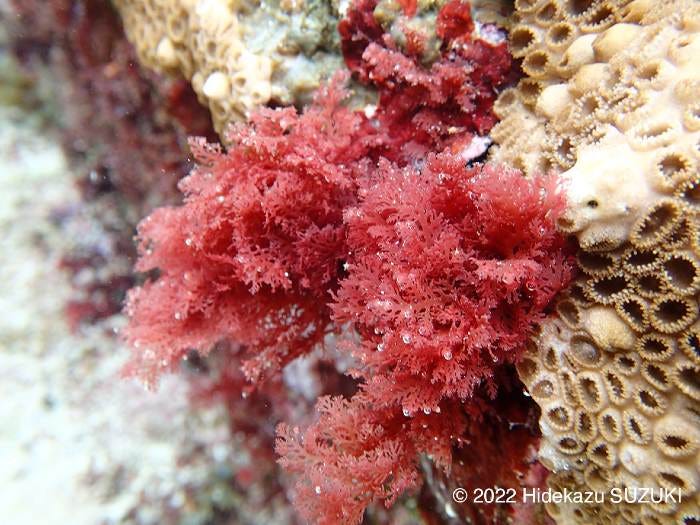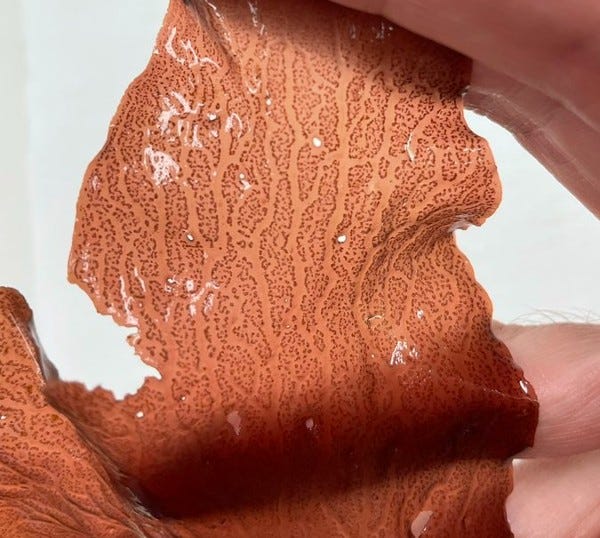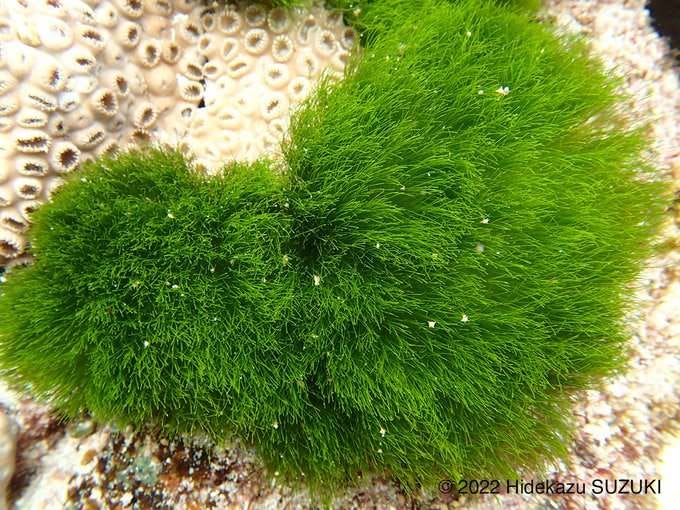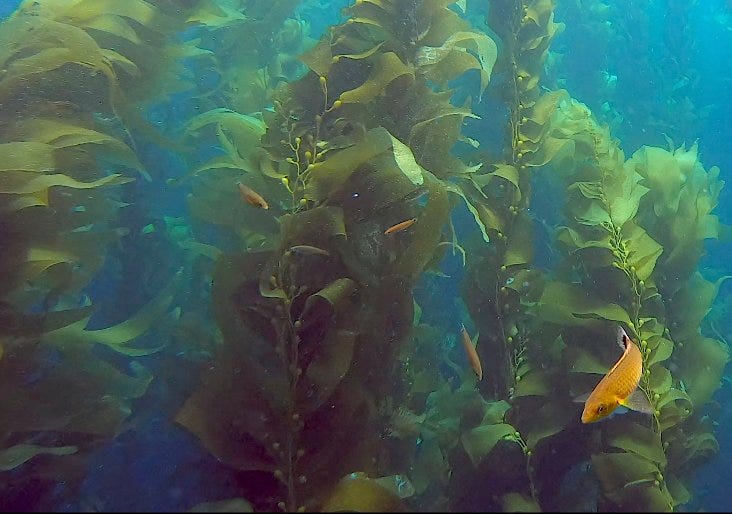What I learned from 24h of Seaweed around the Clock
Growing Palmaria at sea, seaweed for heparin, small-scale biz models & Sargassum startups
Big up to the whole Erwes family for organising 24 hours of seaweed dialogue in Seaweed Around the Clock. Great event, and I cannot possibly cover all of it in the space of this newsletter. However, there is one thing that I don’t like about conferences and webinars: they are not googleable. The talks are still available online until the end of June 2022, but then, all that knowledge will disappear from the internet, and we are back to repeating ourselves in conference talks and 1-on-1 conversations.
That’s not efficient. In the investment session, Caroline Slootweg from Kelp Blue decried the amount of time she has to spend explaining the entire seaweed industry from scratch to potential investors. Time she could use actually building her business. “It would be fantastic if there was some kind of independent adviser whose job it is to educate interested investors.”
I’m working on it, Caroline. In the meantime, here are some things I learned from 24 hours of Seaweed around the Clock.

Seaweed for anticoagulant
Even though science has shown that seaweeds offer great potential to fight a range of diseases, actually making a drug out of algae is very difficult. Besides complex regulations and scientific hurdles, cultivators will also have to up their health and safety standards from food-grade to pharma-grade, the cost of which is difficult to justify for them. This makes health supplements a more straightforward route to market (Eva Prieschl, Marinomed).
Having said that, the anticoagulant heparin market, estimated to be worth 50 billion dollar and to require the offal of 1 billion pigs by 2027, is a prime market for seaweeds to disrupt (Mauro Pavão, University of Rio de Janeiro). Seaweeds also have a lot of potential as thrombolytics (Helen Fitton - Session 9).
Seaweeds can also do the opposite of anticoagulants. Zero Circle has developed a seaweed glue it is looking to commercialise soon (Session 14).

Growing Palmaria at sea
In Ireland, after 3 years of research, Pure Ocean Algae have closed the production cycle for Palmaria palmata (dulse) at sea. Dulse is sold at a much higher price point than kelps, but it is currently only grown in tanks on land; a very controlled, but expensive process. Open sea cultivation offers a route to increase dulse production significantly while diversifying crops and increasing profits for ocean farmers.
Pure Ocean Algae is now ready to raise a seed round and move to commercial scale using a mix of land-based and at-sea cultivation. Their business model is to supply cultivation material to satellite farmers and buy back the seaweeds to process into various products. The company also wants to start a human trial for a diabetes management supplement based on dulse soon.
Meanwhile, elsewhere in Ireland the Beomara consortium is well underway to develop a green chemistry biorefinery that produces a range of high-value applications (Session 13).

How can small-scale seaweed farmers thrive in the West?
Despite Bren Smith’s best intentions, the economics of small-scale farming in Europe and the US remain hard to square with the reality of the market. Any artisanal farmers out there would do well to listen to Kate Burns from Islander Kelp, who is making it work on her remote island of 150 inhabitants at the edge of Northern Ireland.
Her recipe: validate the market above all, expect finding customers will take time and money, and realise that processing to maximise value is essential. Islander Kelp now exports its kelp noodles and pestos to Germany, The Netherlands and Switzerland.
Interesting side note: like in the Faroe Islands, the waters of Rathlin Island also allow 3-4 harvests per year, and can also keep mature kelps on the ropes all winter long (Session 13).
New geographies
Royal Greenland has finished cultivation trials and is now going to use Arctic Seaweed’s modular growing system for scale up, while the government of Greenland has set itself a target to reintroduce seaweed into the local diet (Session 15).
Seaweed cultivation pilot projects are also ongoing in Catalonia (north and south) and in Saudi Arabia, at Neom and KAUST (Session 7).

Sargassum startups showcased
The Sargassum Information Hub has relaunched to offer visitors everything they need to know about Sargassum in the Caribbean in a handy online format (Session 19).
The session also spotlighted three of the most interesting Sargassum valorisation startups:
SMO Solar Process: using solar pyrolysis to turn Sargassum into biochar and activated carbon.
Rum and Sargassum: Anaerobic digestion of Sargassum with rum distillery wastewater creates biomethane to power Barbados’ vehicles move away from fossil fuels.
Thalasso Ocean: Autonomous Sargassum harvesters and small island microbiorefineries to produce fucoidans, alginates and biostimulants.
